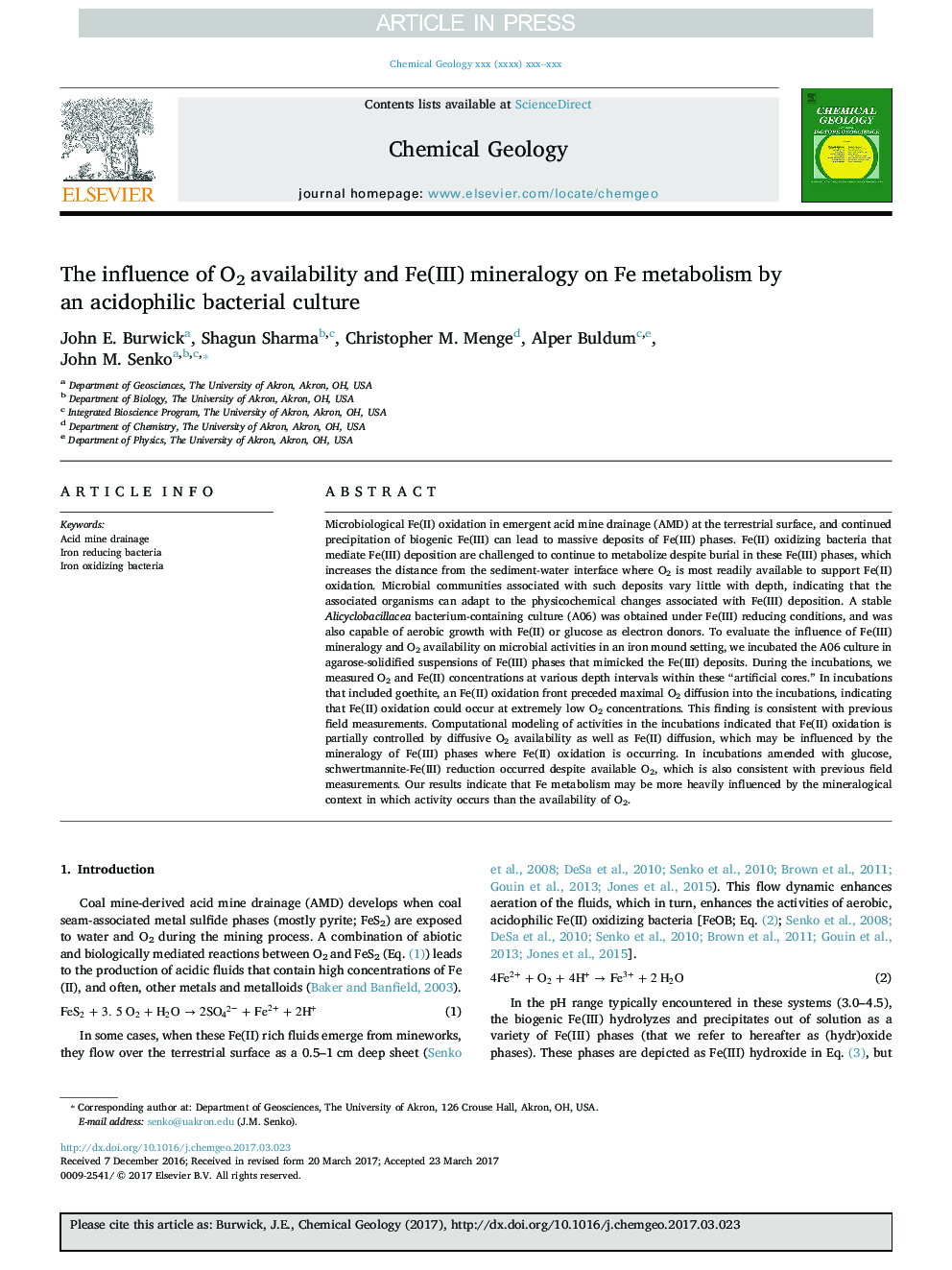| Article ID | Journal | Published Year | Pages | File Type |
|---|---|---|---|---|
| 5782642 | Chemical Geology | 2017 | 11 Pages |
Abstract
Microbiological Fe(II) oxidation in emergent acid mine drainage (AMD) at the terrestrial surface, and continued precipitation of biogenic Fe(III) can lead to massive deposits of Fe(III) phases. Fe(II) oxidizing bacteria that mediate Fe(III) deposition are challenged to continue to metabolize despite burial in these Fe(III) phases, which increases the distance from the sediment-water interface where O2 is most readily available to support Fe(II) oxidation. Microbial communities associated with such deposits vary little with depth, indicating that the associated organisms can adapt to the physicochemical changes associated with Fe(III) deposition. A stable Alicyclobacillacea bacterium-containing culture (A06) was obtained under Fe(III) reducing conditions, and was also capable of aerobic growth with Fe(II) or glucose as electron donors. To evaluate the influence of Fe(III) mineralogy and O2 availability on microbial activities in an iron mound setting, we incubated the A06 culture in agarose-solidified suspensions of Fe(III) phases that mimicked the Fe(III) deposits. During the incubations, we measured O2 and Fe(II) concentrations at various depth intervals within these “artificial cores.” In incubations that included goethite, an Fe(II) oxidation front preceded maximal O2 diffusion into the incubations, indicating that Fe(II) oxidation could occur at extremely low O2 concentrations. This finding is consistent with previous field measurements. Computational modeling of activities in the incubations indicated that Fe(II) oxidation is partially controlled by diffusive O2 availability as well as Fe(II) diffusion, which may be influenced by the mineralogy of Fe(III) phases where Fe(II) oxidation is occurring. In incubations amended with glucose, schwertmannite-Fe(III) reduction occurred despite available O2, which is also consistent with previous field measurements. Our results indicate that Fe metabolism may be more heavily influenced by the mineralogical context in which activity occurs than the availability of O2.
Related Topics
Physical Sciences and Engineering
Earth and Planetary Sciences
Geochemistry and Petrology
Authors
John E. Burwick, Shagun Sharma, Christopher M. Menge, Alper Buldum, John M. Senko,
